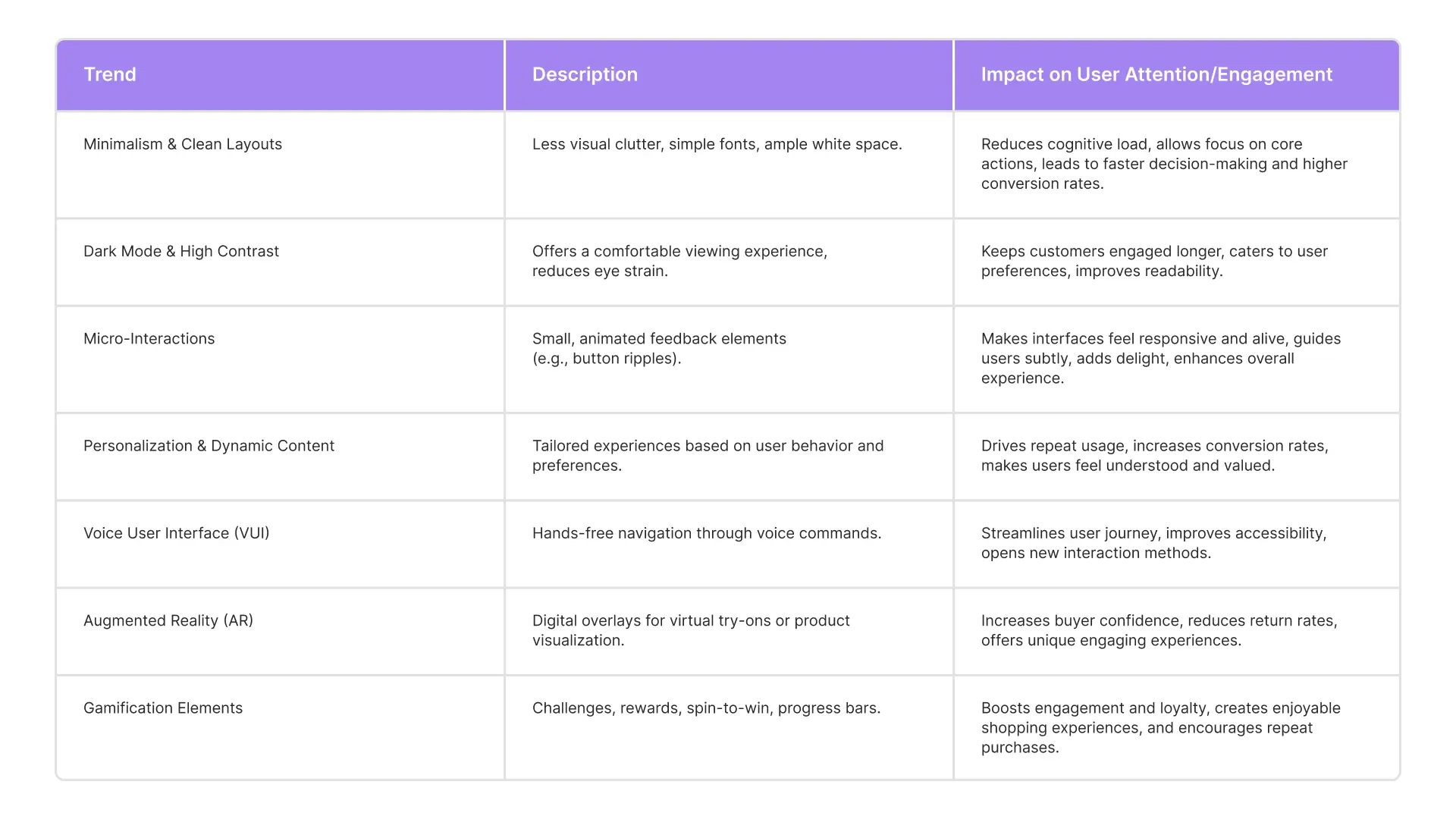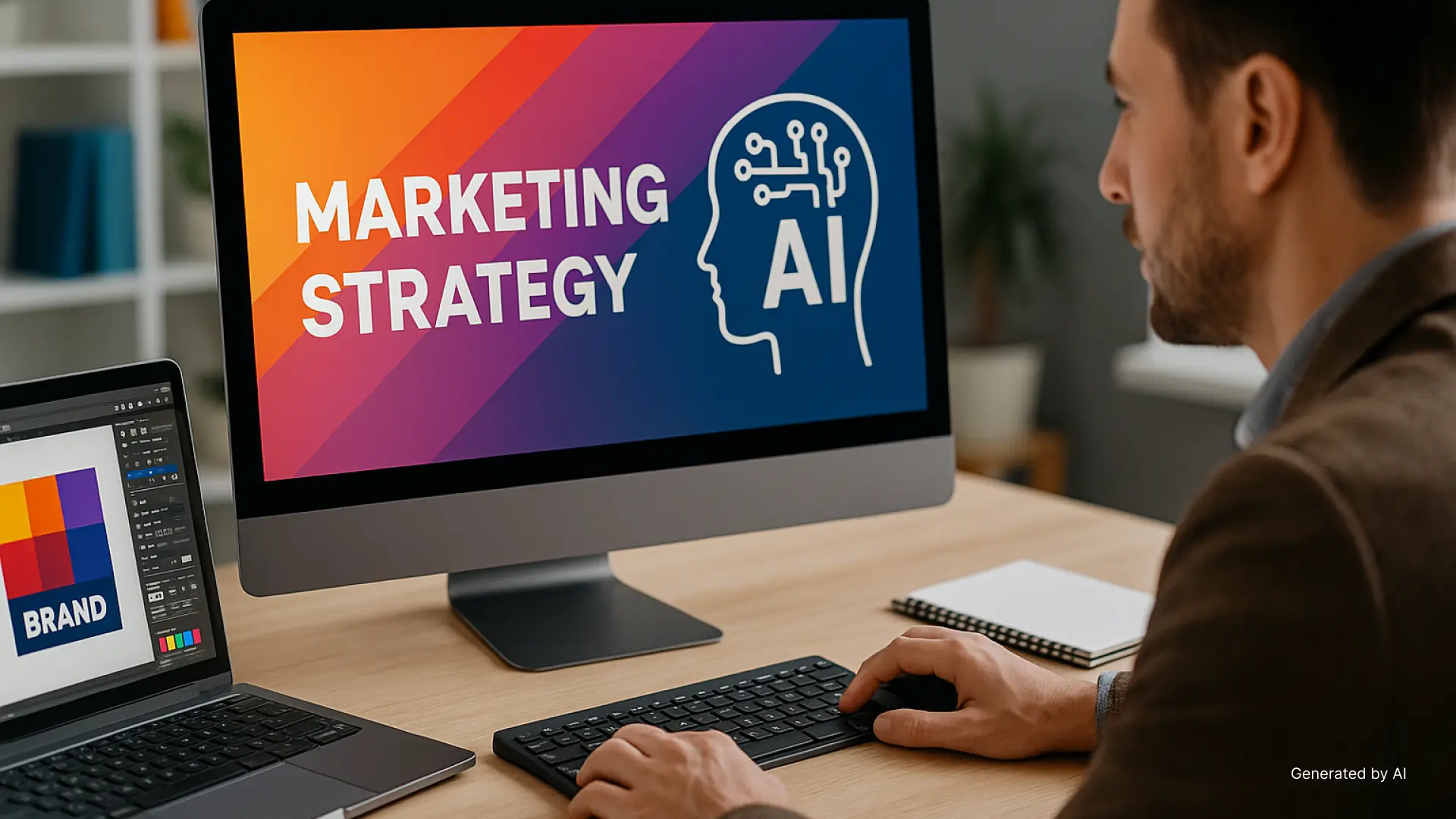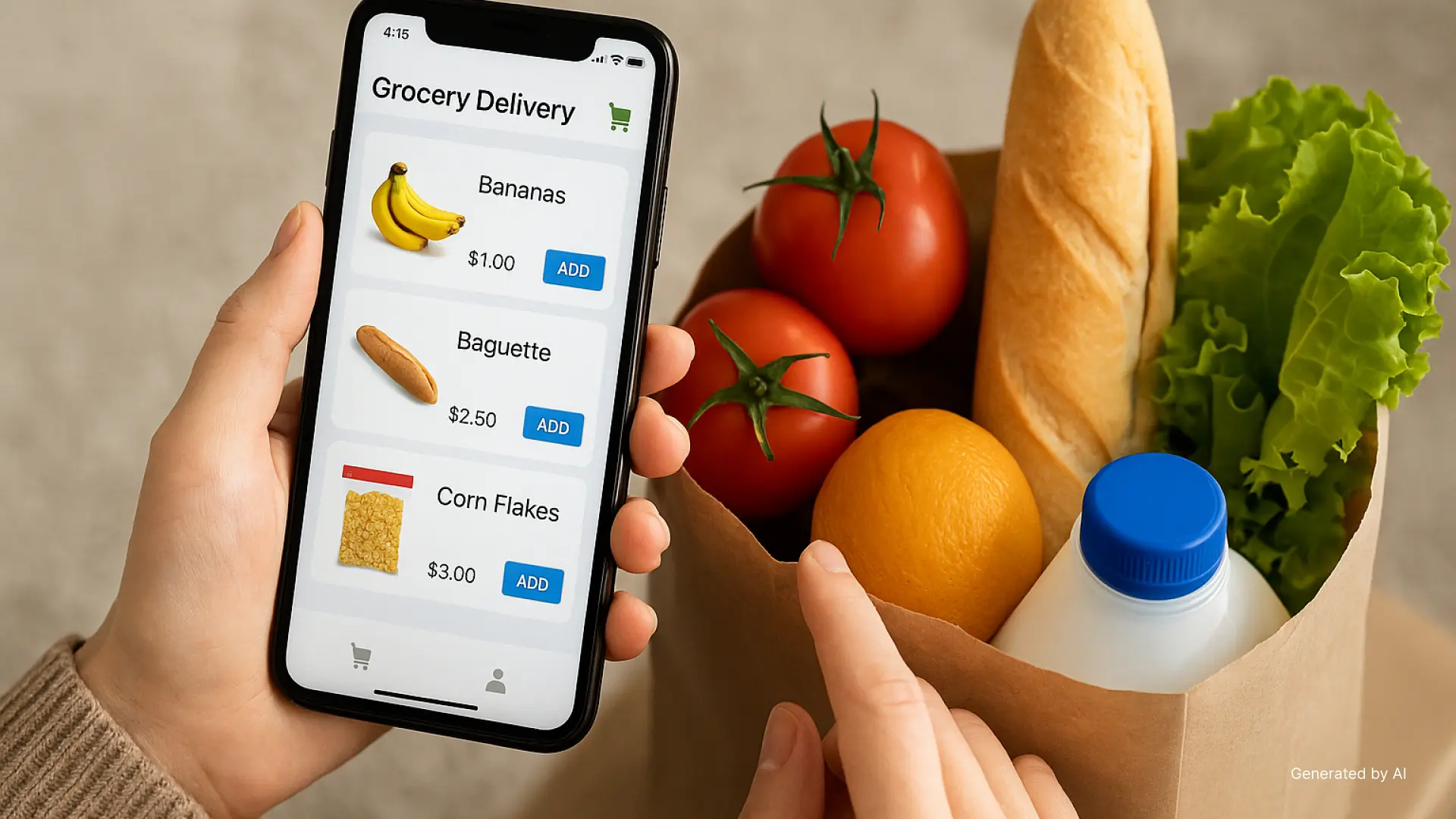How Are Quick‑Commerce Apps Winning (or Losing) Your Attention
The Rapid Evolution of Quick Commerce
The world of quick commerce is experiencing explosive growth, fundamentally reshaping how consumers interact with brands. In this fast-paced environment, speed and convenience are not just preferences; they are absolute necessities. Users today expect instant gratification, where every second of their digital journey truly counts. Projections indicate that the global e-commerce market is set to reach an astounding $8.1 trillion by 2026, with a significant shift towards mobile-first experiences. By 2025, a remarkable 79% of smartphone users will prefer shopping via quick commerce apps over traditional websites, and mobile commerce sales are anticipated to hit $710 billion. This seismic shift underscores a crucial point: quick commerce applications are no longer merely platforms for rapid delivery; they are the primary interface through which brands connect with their customers. The quality of the app’s design directly influences user satisfaction and, by extension, the brand’s perception.
Within this dynamic landscape, a compelling tension emerges: some quick commerce apps master the art of capturing and retaining user attention, while others, despite offering swift services, falter due to design shortcomings. Mobile app stability and overall performance are paramount, exerting the highest influence on user satisfaction, spending, and loyalty. Even a brief 3-second lag or a confusing checkout process can severely undermine an entire quick commerce business model. Conversely, a well-designed, user-friendly application provides an enjoyable and natural experience, significantly boosting engagement and conversion rates. This direct correlation highlights that the quality of UI/UX is not just about aesthetics or features; it is a critical determinant of business success. The app, in essence, becomes the brand experience, and any friction or performance issue can immediately lead to customer churn and lost revenue, making flawless execution and a seamless user journey indispensable.
At Jordie’s Creative Agency, we understand these intricate dynamics. We are dedicated to crafting digital experiences that not only captivate but also retain user attention in the competitive 2025 quick commerce landscape. Our user-centric approach and deep expertise in UI/UX design ensure that applications we develop are not just functional but are powerful tools for brand building and customer loyalty. We believe that by focusing on the user’s journey, we can help businesses thrive in this demanding market.
The Art of Engagement: Winning User Attention with UI/UX in 2025
In the rapid world of quick commerce, simply existing is not enough. Applications must actively engage users, ensuring every interaction is intuitive, delightful, and efficient. This is where sophisticated UI/UX design truly excels, transforming mundane tasks into memorable experiences.
Pioneering UI/UX Trends for Quick Commerce Success
To truly captivate users in 2025, quick commerce applications are embracing cutting-edge design trends that prioritize seamless interactions and genuine connection.
- Minimalism and Clean Layouts: This enduring trend continues to be a cornerstone of effective UI/UX design. The philosophy of “less is more” guides the removal of visual clutter, allowing users to concentrate on essential messages and actions. Clean layouts, characterized by ample white space and bold typography, are prevalent. For quick commerce, this translates directly into lightning-fast product discovery and frictionless navigation. We design interfaces that are straightforward, enabling users to find what they need in mere seconds, rather than minutes.
- Dark Mode and High Contrast Designs: Far from being a fleeting fad, dark mode has become a standard expectation among users. It offers significant benefits, including reduced eye strain and improved readability, particularly in low-light environments. We integrate dark mode options into our designs, recognizing that user comfort directly influences session duration and overall engagement.
- Micro-Interactions and Subtle Animations: These small, animated feedback elements breathe life into interfaces, making them feel responsive and dynamic. They subtly guide users through interactions and add a layer of delight. Examples include gentle button ripples, smooth swipe animations, and reassuring pull-to-refresh effects. These subtle cues enhance usability, provide instant feedback, and make the application feel more polished and intuitive. The ultimate success of UI/UX in quick commerce often lies not in flashy features, but in creating an experience so seamless and intuitive that it becomes almost imperceptible, guiding users to conversion without conscious effort.
- The Power of Personalization and Dynamic Content: Modern consumers expect experiences tailored specifically to them. By leveraging data-driven insights, contemporary UI/UX designs adapt in real-time to user behavior, offering personalized recommendations, customized landing pages, and adaptive layouts. AI-powered recommendations are now considered a must-have feature. Personalization is a powerful driver of repeat usage, making users feel understood and valued. We utilize artificial intelligence to suggest products, promotions, and reordering options that truly resonate, thereby enhancing the entire shopping journey. However, while personalization boosts engagement, excessive personalization or a lack of transparency about data usage can feel intrusive and erode trust. Quick commerce applications must master the delicate balance of delivering highly relevant experiences while being explicitly transparent about data collection and offering users control over their privacy settings to maintain loyalty and comply with evolving regulations.
- Integrating Voice User Interface (VUI) and AR/VR: Voice User Interfaces enable hands-free navigation, which is particularly valuable in mobile and multitasking scenarios. Augmented Reality (AR) and Virtual Reality (VR) integration allow for digital overlays that facilitate real-world try-ons. These immersive technologies increase buyer confidence and reduce return rates by allowing users to virtually try on makeup or visualize furniture in their own homes. These features bridge the gap between online and offline shopping, offering a tangible preview that significantly boosts purchase confidence in quick commerce settings.
- Leveraging Gamification for Enhanced User Experience: Gamification elements, such as challenges, rewards, spin-to-win pop-ups, and progress bars, are widely adopted to boost engagement and foster loyalty. By blending entertainment with utility, we help quick commerce applications create enjoyable shopping experiences that encourage repeat visits, fostering a sense of accomplishment and friendly competition.
The shift in quick commerce is towards transforming the shopping experience from a passive, transactional activity into an active, immersive, and even entertaining one. This change cultivates deeper connections with the brand, leading to increased time spent in the app, higher conversion rates, and stronger brand loyalty, all directly impacting monetization.
Table: 2025 Quick Commerce UI/UX Trends and Their Impact on User Attention

Interactive Elements That Truly Connect with Users
Beyond static screens, 2025 quick commerce applications are leveraging dynamic, interactive elements to deepen user engagement and drive purchasing decisions.
- Shoppable Videos and Live Shopping: These features transform passive viewing into active shopping. Shoppable videos allow direct purchases from engaging video content. Live commerce enables real-time product showcasing and direct customer interaction through Q&A sessions, a trend driving significant adoption on platforms like Instagram Live and TikTok Shop. We help integrate these features, building excitement and fostering a direct connection with products.
- Augmented Reality (AR) Try-ons: AR features, exemplified by apps like IKEA Place or Sephora, allow users to visualize products in their own environment or virtually try on items such as makeup and clothes. This capability significantly increases buyer confidence and reduces return rates. AR bridges the gap between online and offline shopping, offering a tangible preview that boosts purchase confidence in quick commerce settings.
- Quizzes, Challenges, and Reward Systems: Interactive quizzes, challenges, reward points, and milestone rewards, similar to those found in Nike Run Club or Duolingo, create enjoyable shopping experiences and encourage repeat purchases. Even simple spin-to-win pop-ups can be effective. These gamified elements foster a sense of accomplishment and make the shopping journey more engaging and rewarding, directly contributing to user retention and loyalty.
- AI-Driven Recommendations and Wishlist Features: Artificial intelligence-based recommendations intelligently suggest products based on browsing and purchase history. Wishlist sharing features enable users to share desired items with friends and family. These features enhance personalization, simplify product discovery, and facilitate social sharing, extending the application’s reach and relevance.
The Perils of Poor Design: When Quick Commerce Apps Fall Short
While the potential for quick commerce applications is immense, many fail to meet expectations by overlooking critical design principles or, worse, by employing manipulative tactics that alienate users and erode trust.
Unmasking Dark Patterns: Ethical Design in 2025
Dark patterns are manipulative design strategies engineered to trick, sway, or distort consumer choice online. In 2025, regulatory bodies are intensifying their efforts to curb these practices, making ethical UI/UX design not just a matter of good practice, but a legal imperative.
- False Urgency and Scarcity Cues: These tactics involve falsely stating or implying a sense of urgency or scarcity to mislead users into making immediate purchases. Examples include phrases like “Only 2 rooms left! 30 others are looking at this right now,” or the use of fake countdown timers and stock levels. While a sense of urgency can drive conversions, false urgency breeds distrust and can lead to user abandonment.
- Basket Sneaking and Hidden Fees: This refers to the inclusion of additional items, services, or even donations in the cart at checkout without the user’s explicit consent, thereby increasing the total amount payable. It also encompasses unexpected costs, often referred to as drip-pricing, that appear during the checkout process. Transparency is paramount; all costs should be clear, and any additions must be opt-in, building user confidence rather than frustrating them at the final stage of purchase.
- Confirm Shaming: This manipulative tactic uses phrases, videos, audio, or other means to induce fear, shame, ridicule, or guilt, nudging users to act in a certain way, such as purchasing a product or continuing a subscription. An example is a flight booking platform using the phrase “I will stay unsecured” if a user declines insurance. Designs should prioritize positive reinforcement and respect user choices, avoiding manipulative emotional tactics that can severely damage brand perception.
- Forced Action and Subscription Traps: Forced action compels a user to buy additional goods, subscribe, or sign up for unrelated services to access the product or service they originally intended to purchase. Subscription traps, on the other hand, make the cancellation of a paid subscription impossible, overly complex, or deliberately hidden. Clear, easy cancellation processes are essential, and all user actions should be voluntary and transparent, fostering genuine engagement rather than resentment.
The use of dark patterns is not merely an ethical concern but a significant business risk. Beyond potential legal penalties, these practices fundamentally erode user trust, leading to higher churn rates, negative brand perception, and a long-term inability to retain attention. Building trust through transparent design is becoming a non-negotiable foundation for sustainable quick commerce success. Businesses are advised to meticulously audit their online marketing strategies to identify and eliminate dark patterns and simplify cancellation processes. It is also important to note that generative AI, due to the nature of its training data, can inadvertently replicate these dark patterns. At Jordie’s Creative Agency, we are committed to ethical UI/UX design, meticulously auditing our designs to eliminate dark patterns and ensuring every interaction is transparent, user-friendly, and respects consumer choice. We are also highly mindful of AI’s role in design, ensuring it enhances, rather than manipulates, the user journey.
Addressing Common UX Pain Points That Drive Users Away
Even without malicious intent, subpar UI/UX can be detrimental. In quick commerce, where speed is paramount, any friction can lead to instant abandonment.
- The Criticality of Performance: Speed and Stability: Mobile application stability (e.g., crashes, freezes) and performance (e.g., load speeds, input responsiveness) are the most impactful factors on user satisfaction and loyalty. A mere 3-second lag can completely undermine a quick commerce business, and slow-loading websites contribute to billions in lost sales annually. Performance issues are, in fact, the leading cause of user churn. We prioritize lightning-fast loading times and robust stability in our design and development processes. Our approach emphasizes optimization, efficient image compression, and robust backend architecture, ensuring users never abandon an order due to frustration. The cost of poor performance in quick commerce extends far beyond a single lost sale; it impacts overall brand perception, customer loyalty, and long-term revenue. Investing in performance optimization is not merely a technical task but a direct revenue-generating strategy. The seemingly minor improvements in speed translate into significant financial gains, making performance a primary focus for quick commerce application development in 2025.
- Simplifying Navigation and Decluttering Interfaces: Complex navigation and cluttered menus are common sources of user frustration and contribute to increased bounce rates. Minimalistic interfaces, by focusing on essential elements and eliminating distractions, enhance usability. Clear and predictable navigation is crucial for a smooth user journey. We design intuitive navigation paths and clean layouts, ensuring users can effortlessly find products, modify carts, and complete purchases without confusion.
- Seamless Checkout and Robust Customer Support: The journey from adding items to the cart to completing a purchase must be frictionless. This includes features like one-tap add-to-cart, easy cart modification, saved payment methods, and a quickly scannable order summary. Complicated checkout processes are a primary reason for cart abandonment. Additionally, quick resolution of issues through in-app chat support and transparent real-time order tracking are essential for user satisfaction. We streamline the entire checkout flow, minimizing form fields and offering multiple payment options to reduce friction. We also integrate robust customer support features, ensuring users have immediate assistance when needed, transforming potential frustrations into positive experiences. Given that the vast majority of quick commerce interactions occur on mobile devices, a “mobile-first” approach is no longer a best practice but a fundamental requirement. This means designing for small screens, touch input, and varying network conditions first, then scaling up for other devices. Neglecting this leads to significant user frustration and direct revenue loss, as mobile users will simply abandon non-optimized experiences.
Beyond Engagement: UI/UX’s Impact on Monetization and Retention
Exceptional UI/UX design does more than just make an application pleasant to use; it directly influences a quick commerce business’s bottom line, driving sustainable monetization and fostering long-term customer loyalty.
Strategic Monetization Models for Quick Commerce in 2025
The most effective quick commerce application developers in 2025 integrate monetization into their product thinking from the very beginning, ensuring that revenue generation aligns seamlessly with a superior user experience.
- Subscription-Based Models and In-App Purchases: Subscription models represent a popular and sustainable strategy, offering premium features or exclusive content for recurring fees. In-app purchases (IAP) encompass both consumables (e.g., in-app tokens, health upgrades) and non-consumables (e.g., ad removal, permanent features). Projections indicate that subscription revenue from media and digital content alone will reach $1.26 trillion by 2025. We design seamless pathways for these premium offerings, ensuring that such monetization strategies enhance, rather than detract from, the overall user experience.
- Effective In-App Advertising (IAA) and Brand Partnerships: In-app advertising is a significant revenue driver, with ad spending expected to reach $390.04 billion in 2025. Native ads, which are designed to blend seamlessly with the application’s environment, are considered optimal for preserving the user experience. Rewarded video ads also prove highly effective. Furthermore, brand sponsorships and partnerships, though often overlooked, offer beneficial monetization avenues. We assist quick commerce applications in integrating advertising thoughtfully, prioritizing native formats and rewarded experiences that do not disrupt the user flow, thereby ensuring monetization without alienating users. For quick commerce applications, monetization is no longer a separate business decision but an integral part of the UI/UX design process. Successful strategies in 2025 will seamlessly weave revenue generation into the user journey, ensuring that ads, subscriptions, or in-app purchases feel like natural extensions of the experience rather than intrusive interruptions. This proactive design approach minimizes churn and maximizes long-term revenue.
Driving Conversions and Fostering Loyalty Through Design
The ultimate measure of a quick commerce app’s UI/UX success lies in its capacity to convert users into loyal, repeat customers.
- The Power of First Impressions and User Retention:
Users typically decide whether to keep an application in less than 10 seconds. A positive user experience encourages users to return, while 88% of consumers are less likely to revisit a site after a negative UX. It is also significantly more cost-effective to retain an existing customer (5–25 times cheaper) than to acquire a new one. We focus on creating compelling first impressions and intuitive onboarding processes, understanding that a smooth initial experience is crucial for long-term retention, especially in quick commerce apps where every second matters. - Optimizing for Mobile-First and Reducing Cart Abandonment:
A mobile-first design approach is essential, as over 90% of application traffic originates from mobile users. A streamlined mobile checkout process can dramatically reduce cart abandonment and boost conversion rates. Our designs prioritize mobile responsiveness and simplify the checkout flow, ensuring that users can complete purchases quickly and effortlessly on any device. For quick commerce apps, this mobile optimization is not optional, it’s mission-critical. - Increasing Customer Lifetime Value (CLTV) with Exceptional UX:
Businesses that invest in user experience consistently see significant returns on investment, often exceeding ratios of 100:1. Even a modest 1% improvement in conversion rates can translate into millions in additional revenue. Personalized experiences, for instance, can boost retention by 15%. By focusing on user satisfaction, seamless interactions, and personalized experiences, we help quick commerce apps not only acquire new customers but also nurture existing ones, leading to higher customer lifetime value and sustainable growth. The data unequivocally shows that every dollar spent on improving user experience yields significant returns in terms of increased conversion rates, higher average order values, and enhanced customer lifetime value. This makes UX a strategic imperative for financial growth, not just a design consideration. - Leveraging Social Proof and Trust Signals:
Customer testimonials can increase conversions by an average of 34%, security badges near payment forms can reduce cart abandonment by 19%, and displaying subscriber counts (e.g., “Join 50,000+ subscribers”) can lift sign-ups by 23%. Authentic product reviews, ratings, and user-generated content are highly persuasive elements. We integrate clear trust signals and social proof elements into the UI, building confidence and encouraging users to complete their purchases. Exceptional UI/UX creates a virtuous cycle in quick commerce apps. A seamless, enjoyable experience leads to repeat purchases, positive word-of-mouth, and increased engagement with loyalty programs. This cycle reduces customer acquisition costs and builds a stable, high-value customer base, ensuring long-term profitability and market leadership.
Partnering for Digital Excellence: Our Expertise at Jordie’s Creative Agency
Understanding these trends, challenges, and opportunities is one thing; effectively implementing them is another. At Jordie’s Creative Agency, we don’t just follow trends; we strive to set them, ensuring your quick commerce application stands out in the competitive 2025 market. We combine cutting-edge design with strategic insights to deliver measurable results.
We approach every project with a deep understanding of your unique business needs and the evolving digital landscape. Our services are designed to create quick commerce experiences that truly resonate with your audience, from the initial concept to ongoing optimization:
- UI/UX Design: We specialize in crafting intuitive, engaging, and high-performing user interfaces and experiences. From lightning-fast product discovery and streamlined checkouts to personalized user journeys and ethical design, we ensure your app wins and retains attention.
- Brand Positioning & Logo Design: We help define your brand’s unique identity and create memorable logos that resonate with your target audience, ensuring consistency across all digital touchpoints.
- Website Design & Development: Beyond applications, we build responsive, high-performance websites that complement your quick commerce strategy, ensuring a seamless omnichannel experience.
- Content Marketing: We develop compelling content strategies that engage your audience, build authority, and drive organic traffic to your app and website.
- Search Engine Optimization (SEO): We optimize your digital presence to ensure your quick commerce app and website are easily discoverable, driving organic visibility and user acquisition.
- Social Media Marketing: We craft engaging social media campaigns that build community, drive app downloads, and foster direct customer engagement.
- Pay-Per-Click (PPC) Services: We create targeted advertising campaigns to drive immediate traffic and conversions to your quick commerce app, maximizing your return on investment.
- Video Marketing: We produce dynamic video content, including shoppable videos, that captivates audiences and showcases your products in an engaging way.
We are dedicated to delivering user-centric, ethical, and performance-driven solutions that not only meet but exceed the demanding expectations of the 2025 quick commerce landscape. We believe in building digital experiences that foster trust, drive engagement, and deliver tangible business growth. For quick commerce businesses to truly win and retain attention in 2025, a fragmented approach to app UI/UX is insufficient. Success requires a holistic digital strategy where the application seamlessly integrates with website design, content marketing, social media presence, and advertising efforts. We offer this comprehensive ecosystem, ensuring consistent brand experience and maximum reach across all customer touchpoints.
Conclusion: Shaping the Future of Quick Commerce, Together
In 2025, the success of quick commerce apps hinges critically on their ability to master user attention. This requires a proactive approach: embracing cutting-edge UI/UX trends like personalization, interactive elements, and performance optimization, while rigorously avoiding manipulative dark patterns and resolving common user pain points. The quick commerce landscape is not static; it demands a commitment to continuous improvement and agile adaptation. UI/UX design is an ongoing process of data analysis, A/B testing, and iterative refinement. Businesses must partner with agencies that offer long-term strategic support not just one-off design projects to stay ahead in this dynamic environment.
We invite quick commerce businesses to partner with Jordie’s Creative Agency to transform their digital presence. Our expertise lies in crafting experiences that delight users, drive conversions, and ensure long-term success in this rapidly evolving market.
Connect with us today to discuss how we can elevate your quick commerce strategy.






